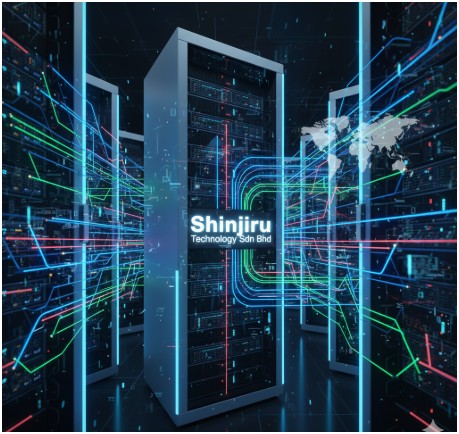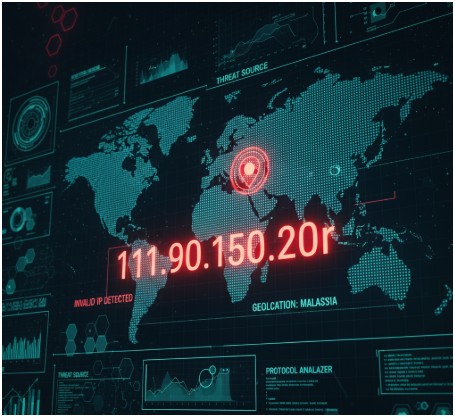I still remember the first time I stumbled across 111.90.150.20r while digging through a site log.
At first glance, it looked like a standard IPv4 address — until I noticed that odd little “r” at the end. I laughed, thinking it was just a typo. But curiosity got the better of me, and I decided to investigate further.
That little detour turned into a deep dive into how hosting providers work, how IP addresses reveal more than most people think, and why understanding them is more important than ever for your online safety.
So if you’ve also encountered 111.90.150.20r and wondered what it’s all about, let me walk you through everything I learned.
What Exactly Is 111.90.150.20r?

At first glance, 111.90.150.20r looks like a normal IPv4 address — but the “r” at the end makes it invalid. IP addresses are made up of four sets of numbers (called octets) separated by dots, each ranging from 0 to 255. Letters aren’t allowed.
So what does this mean? Most likely, 111.90.150.20r is a typo for 111.90.150.20, a real and active IP address. That address belongs to Shinjiru Technology Sdn Bhd, a well-known hosting company based in Malaysia. It’s often associated with website servers and hosting infrastructure rather than personal devices or mobile connections.
When I traced the IP, here’s what I found:
- Country: Malaysia
- Region: Selangor
- City: Putra Heights
- Coordinates: 2.9936, 101.5726
- Organization: Shinjiru Technology Sdn Bhd
- ASN: AS45839
- Usage Type: Hosting
In short, 111.90.150.20r points us toward a commercial hosting environment — not someone’s home Wi-Fi.
Where Is 111.90.150.20r Located?
Digging deeper into the geo-location of 111.90.150.20r (or rather, the valid 111.90.150.20), I found that it’s based in Putra Heights, a township in Selangor, Malaysia. That region is known for being a tech hub with plenty of data centers and hosting infrastructure.
What’s interesting is that Shinjiru’s servers often host websites, VPNs, and email services for clients around the world. So even if you’re in the U.S. or Europe, a site you visit could still connect you to this Malaysian IP.
For me, realizing how global the internet really is — with data bouncing through servers halfway across the world — was a reminder of how interconnected and complex online systems can be.
Is 111.90.150.20r Safe or Risky?

Now, here’s where things get a little more serious. IP addresses like 111.90.150.20r, tied to hosting companies, can be used for perfectly legitimate purposes — but they can also sometimes host malicious sites.
Because servers host multiple websites, one server might power a popular e-commerce site while another site on the same IP distributes malware.
That’s why security analysts (myself included) always recommend caution if an unfamiliar site resolves to a hosting IP like this.
Some tips I follow myself:
- Check the site reputation. Use tools like VirusTotal or URLVoid to scan URLs associated with the IP.
- Use a firewall. A solid firewall or security suite can block malicious connections even if you accidentally visit a bad site.
- Don’t share personal info. If a site hosted on 111.90.150.20r asks for sensitive information, double-check its legitimacy first.
In my experience, most hosting IPs are neutral — but your safety depends on what’s hosted there.
How Can You Check if 111.90.150.20r Is Connected to a Website?
Curious about which sites might be hosted on 111.90.150.20r? Here’s the quick process I use whenever I want to find out more about an IP:
- Reverse IP Lookup: Use tools like YouGetSignal or SecurityTrails to see domains sharing the same IP.
- WHOIS Lookup: This shows the owner (Shinjiru Technology Sdn Bhd in this case) and contact info.
- Traceroute Tools: These reveal the network path your connection takes to reach that IP, giving you a clearer idea of how data flows.
I often use these steps when I’m unsure about a site’s trustworthiness. They can tell you a lot about the network behind it — including whether you’re dealing with a reputable host or a sketchy setup.
Why Does 111.90.150.20r Matter for Your Online Security?
You might wonder, “Why does it matter if some random IP like 111.90.150.20r shows up in my logs?” Trust me, it matters more than you think.
Whenever you see an unfamiliar IP in your analytics or firewall reports, it could indicate automated bots, scrapers, or even targeted probes. Identifying the owner helps you understand whether it’s just normal server traffic or something you need to investigate.
When I first started monitoring my server logs, I ignored these unknown IPs. Later, I realized one of them was repeatedly trying to access admin pages — a sign of a brute-force attempt. That’s when I learned that paying attention to IP details isn’t paranoia — it’s smart security.
Common Mistakes People Make With 111.90.150.20r
I’ve seen people make a few common mistakes when dealing with IP addresses like 111.90.150.20r:
- Assuming the IP is personal. Remember, this is a hosting IP, not a home device.
- Ignoring the typo. That “r” makes the original invalid, so always double-check the correct IP.
- Overreacting. Not every connection from a hosting IP is malicious — many are automated bots or harmless crawlers.
Being informed helps you react appropriately — neither too casually nor too fearfully.
FAQs About 111.90.150.20r
What is 111.90.150.20r used for?
It’s linked to a hosting server run by Shinjiru Technology Sdn Bhd in Malaysia. Such IPs typically power websites, VPNs, or cloud services. It’s not a residential IP, so you won’t find individual users behind it.
Is 111.90.150.20r dangerous?
Not inherently. The IP itself is neutral — but websites or services hosted on it could range from safe to risky. Always check site reputation and use security tools before interacting with unknown domains.
Why does 111.90.150.20r appear in my logs?
It likely means a site, service, or bot hosted on that server interacted with your system. It could be a search engine crawler, a legitimate service, or in some cases, a security probe.
How do I block traffic from 111.90.150.20r?
If you suspect suspicious activity, you can block it in your firewall or security software by creating an IP-based rule. But make sure you confirm it’s malicious before blocking — you don’t want to disrupt normal traffic by mistake.
My Final Take on 111.90.150.20r
If there’s one thing my experience with 111.90.150.20r taught me, it’s that IP addresses are more than just numbers — they’re clues.
They tell stories about where traffic comes from, who’s behind a connection, and how the internet stitches itself together across continents.
Next time you see a strange IP like 111.90.150.20r pop up, don’t shrug it off. Investigate it, trace it, and use the tools available to protect yourself.
That one small step can mean the difference between staying secure and falling for something shady.

